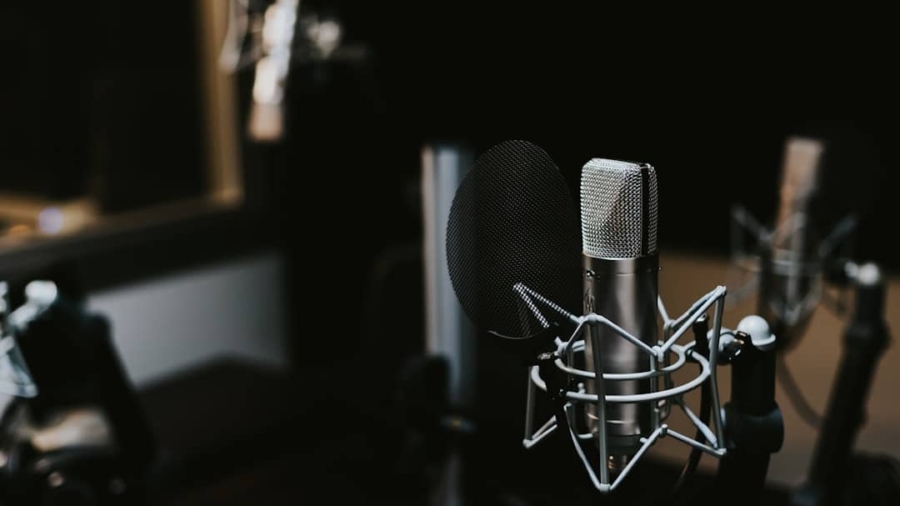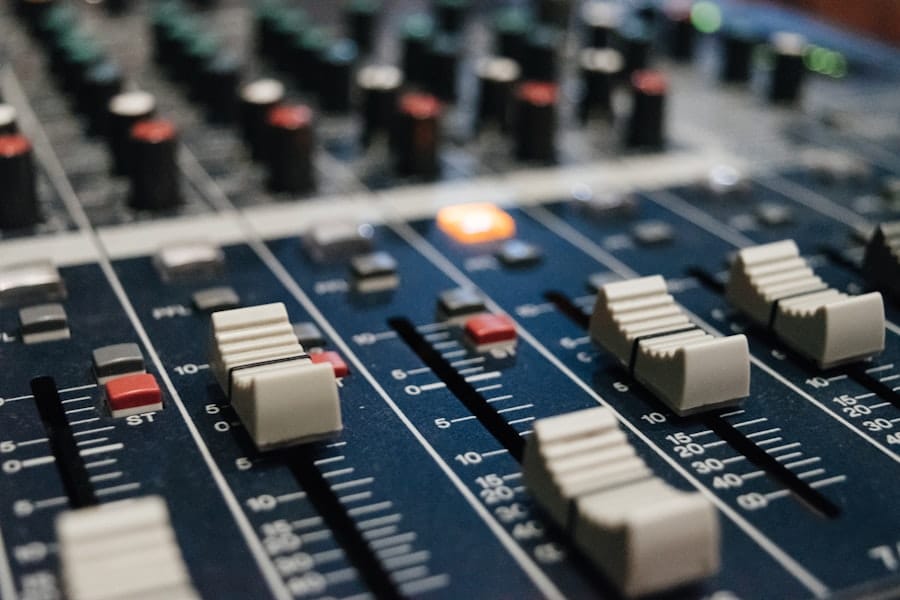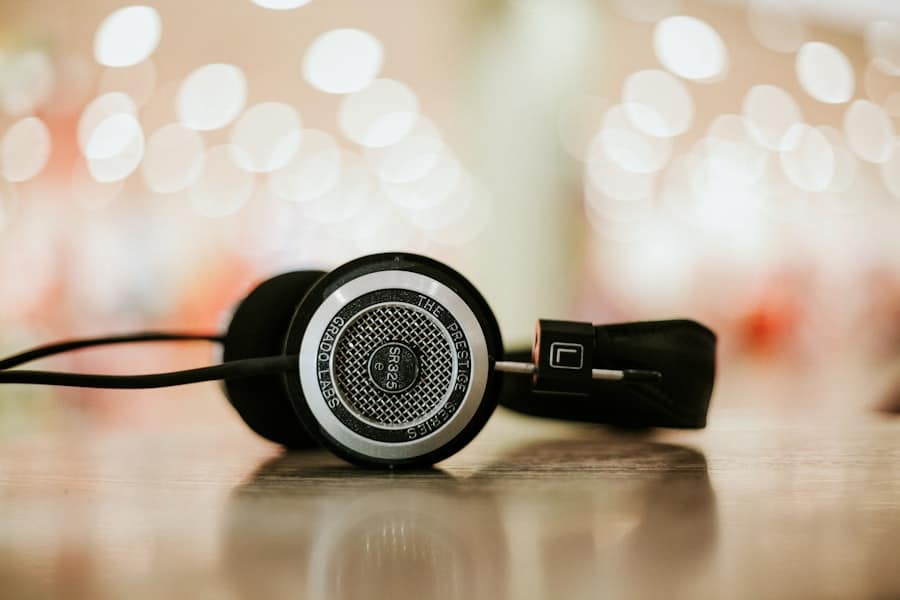In the rapidly evolving landscape of digital media, podcasts have emerged as a dominant form of content consumption. With millions of podcasts available across various platforms, the competition for listener attention is fierce. One of the most critical factors that can make or break a podcast is audio quality.
High-quality audio not only enhances the listening experience but also establishes credibility and professionalism. Poor audio quality, on the other hand, can lead to listener disengagement, regardless of how compelling the content may be. Therefore, podcasters must prioritize audio quality to ensure their message resonates with audiences.
The importance of audio quality extends beyond mere aesthetics; it plays a significant role in audience retention and engagement. Research indicates that listeners are more likely to abandon a podcast episode if they encounter distracting background noise, inconsistent volume levels, or unclear speech. As such, podcasters must invest time and resources into understanding the nuances of audio production.
This includes familiarizing themselves with various tools and techniques that can enhance audio quality, particularly those powered by artificial intelligence (AI). By leveraging AI tools, podcasters can streamline their production processes while achieving professional-grade sound quality that captivates their audience.
Key Takeaways
- Good audio quality is essential for podcasts to engage and retain listeners.
- AI tools can help optimize audio quality by reducing noise, enhancing audio, and improving accessibility through transcription and captioning.
- AI-based noise reduction and audio enhancement tools can significantly improve the overall quality of podcast audio.
- Automatic transcription and captioning can make podcasts more accessible to a wider audience.
- AI can also be used for voice modulation and equalization to create a more professional and engaging podcast.
Understanding AI Tools for Audio Optimization
Artificial intelligence has revolutionized numerous industries, and podcasting is no exception. AI tools designed for audio optimization offer podcasters innovative solutions to enhance their sound quality with minimal manual intervention. These tools utilize machine learning algorithms to analyze audio files, identify imperfections, and apply corrective measures automatically.
One of the most significant advantages of using AI tools is their ability to learn from vast datasets. By analyzing thousands of hours of audio recordings, these tools can identify patterns and best practices in audio production.
This capability allows them to make informed decisions about how to optimize sound quality based on the specific characteristics of a given recording. As a result, podcasters can achieve high-quality audio without needing extensive technical knowledge or experience in sound engineering. This democratization of audio production empowers creators at all levels to produce professional-sounding podcasts.
Noise Reduction and Audio Enhancement with AI
Noise reduction is a critical aspect of audio optimization that can significantly impact the overall quality of a podcast. Background noise—whether it be hum from electrical devices, traffic sounds, or even the rustling of papers—can distract listeners and detract from the content being presented. AI-powered noise reduction tools employ sophisticated algorithms to analyze audio signals and distinguish between desirable sounds (like voices) and unwanted noise.
By isolating these elements, the software can effectively reduce or eliminate background noise without compromising the integrity of the primary audio. For example, tools like Adobe Audition’s “Auto-Duck” feature utilize AI to automatically lower background music levels when dialogue is detected. This ensures that the speaker’s voice remains clear and prominent, enhancing the overall listening experience.
Additionally, AI-driven enhancement features can improve vocal clarity by adjusting frequencies that may be too harsh or too soft. By applying equalization techniques intelligently, these tools can create a balanced sound profile that makes voices more pleasant to listen to over extended periods.
Automatic Transcription and Captioning for Improved Accessibility
In an increasingly diverse world, accessibility is paramount in content creation. Automatic transcription and captioning powered by AI not only make podcasts more accessible to individuals with hearing impairments but also cater to non-native speakers who may benefit from written text alongside audio. AI transcription tools utilize advanced speech recognition algorithms to convert spoken language into written text with remarkable accuracy.
This process not only saves time but also reduces the potential for human error in transcription. Moreover, providing captions enhances the overall user experience by allowing listeners to follow along with the content more easily. Many podcast platforms now support integrated captioning features that display transcriptions in real-time as episodes play.
This dual-format approach caters to various learning styles and preferences, ultimately broadening the podcast’s audience reach. Additionally, having transcripts available can improve search engine optimization (SEO), making it easier for potential listeners to discover episodes through search engines.
Voice Modulation and Equalization with AI
Voice modulation is another area where AI tools can significantly enhance podcast audio quality. Podcasters often strive for a specific vocal tone or character that aligns with their brand identity. AI-driven voice modulation tools allow creators to adjust pitch, tone, and even add effects like reverb or echo to achieve their desired sound profile.
This capability enables podcasters to craft a unique auditory experience that resonates with their target audience. Equalization (EQ) is equally important in shaping the overall sound of a podcast. AI-powered EQ tools analyze audio frequencies and make real-time adjustments to ensure that voices are clear and balanced across different playback devices.
For instance, a voice may sound different on headphones compared to speakers; AI EQ tools can compensate for these variances by optimizing sound for various listening environments. By employing these advanced techniques, podcasters can create a more immersive experience that keeps listeners engaged throughout each episode.
AI-Based Audio Editing and Mixing Techniques
The editing and mixing process is often one of the most time-consuming aspects of podcast production. However, AI-based audio editing tools are changing this landscape by automating many tedious tasks traditionally performed by sound engineers. These tools can analyze an entire audio file and identify sections that require editing—such as removing filler words like “um” or “uh,” silences, or awkward pauses—allowing podcasters to focus on content rather than technical details.
Moreover, AI-driven mixing techniques can automatically balance audio levels between different tracks, ensuring that dialogue, music, and sound effects coexist harmoniously within the final mix. For example, software like Descript offers features that allow users to edit audio by simply editing text transcriptions, making it easier for podcasters to refine their episodes without needing extensive knowledge of traditional audio editing software. This level of automation not only saves time but also empowers creators to produce high-quality content more efficiently.
Integrating AI Tools into Podcast Production Workflow
Integrating AI tools into a podcast production workflow requires careful consideration of existing processes and how these technologies can enhance them. Podcasters should begin by identifying specific pain points in their current workflow—be it time-consuming editing tasks or challenges with achieving consistent audio quality—and explore AI solutions tailored to address these issues. For instance, if background noise is a recurring problem during recording sessions, investing in an AI noise reduction tool could yield significant improvements in audio clarity.
Once suitable AI tools are identified, podcasters should experiment with incorporating them into their production pipeline gradually. This might involve using automatic transcription services during the editing phase or employing voice modulation software during post-production to refine vocal delivery. By taking an iterative approach, creators can assess the effectiveness of each tool and make adjustments as needed without overwhelming themselves with new technology all at once.
Best Practices for Using AI Tools to Optimize Audio Quality
To maximize the benefits of AI tools in podcast production, podcasters should adhere to several best practices that ensure optimal results. First and foremost, it is essential to maintain high-quality recordings from the outset. While AI tools can significantly enhance audio quality during post-production, they cannot fully compensate for poor initial recordings caused by inadequate equipment or improper recording techniques.
Additionally, podcasters should familiarize themselves with the capabilities and limitations of the AI tools they choose to use. Understanding how these technologies function will enable creators to make informed decisions about when and how to apply them effectively within their workflow. Regularly updating software and staying informed about new features or advancements in AI technology will also help podcasters stay ahead in an ever-evolving landscape.
Finally, seeking feedback from listeners regarding audio quality can provide valuable insights into areas for improvement. Engaging with the audience not only fosters community but also helps podcasters refine their approach based on real-world experiences. By combining high-quality recordings with advanced AI optimization techniques and actively seeking listener feedback, podcasters can create compelling content that resonates deeply with their audience while maintaining exceptional audio quality throughout each episode.
If you are interested in staying up to date with the latest trends in technology and business, you may want to check out this article on the top trends on LinkedIn for 2023. It provides valuable insights into what professionals are discussing and focusing on in the coming year. This information could be useful for podcasters looking to optimize their content and reach a wider audience.
FAQs
What are AI tools for optimizing audio quality in podcasts?
AI tools for optimizing audio quality in podcasts are software applications that use artificial intelligence algorithms to enhance and improve the sound quality of podcast recordings. These tools can automatically remove background noise, adjust audio levels, and enhance overall sound clarity.
How do AI tools improve audio quality in podcasts?
AI tools improve audio quality in podcasts by using advanced algorithms to analyze and process audio recordings. These tools can identify and remove background noise, adjust audio levels, and enhance sound clarity, resulting in a more professional and polished podcast audio.
What are the benefits of using AI tools to optimize audio quality for podcasts?
The benefits of using AI tools to optimize audio quality for podcasts include improved sound clarity, reduced background noise, enhanced audio levels, and a more professional and polished final product. These tools can save time and effort by automating the audio optimization process.
Are there any drawbacks to using AI tools for podcast audio optimization?
While AI tools can significantly improve audio quality in podcasts, there may be some limitations to their capabilities. For example, some tools may not be able to fully eliminate certain types of background noise or may introduce artifacts into the audio. It’s important to carefully evaluate and test different AI tools to find the best fit for your specific podcast needs.
What are some popular AI tools for optimizing audio quality in podcasts?
Some popular AI tools for optimizing audio quality in podcasts include Adobe Audition, Auphonic, and Descript. These tools offer a range of features such as noise reduction, audio leveling, and voice enhancement, making them valuable resources for podcasters looking to improve their audio quality.



